Stem stitch, chain stitch, french knot; it isn’t often you come upon a stitch that is actually named after someone. The burden stitch is a very old stitch, used during the middle ages. It was re-popularized by Elizabeth Burden, sister to the designer William Morris. This stitch is useful because it can be used to quickly (or relatively quickly anyways) fill large areas. It has a basket-weave type texture and since it is made in two steps, it is easy to imagine lots of variations.
The basic stitch
First make rows of horizontal bars.
Then make straight stitches going over the horizontal lines going across. The stitch is started at the top of the lower horizontal bar and extends all the way up to the bottom of the next higher bar.
Continue filling in the space with the straight stitches over the horizontal bars. Note that the colors can be changed to give contrast or add shading. They can be varied across the rows too!
Variation 1
The first variation, is the length of the vertical stitches. They can be placed so that the horizontal bars end up completely covered if the stitches are placed so that go over two horizontal bars instead.
Fill in the area.
At the top, you can make half stitches so there is a nice, finished edge. (You can do this at the bottom too).
Variation 2
Try spacing out the stitches some. They can be very close, or spaced out a bit, depending on how much fabric and horizontal stitching you want to show through.
Variation 3
The vertical stitches can be made double. This allows for more of the horizontal bars to show. Note that you can have differing thread thicknesses for the horizontal and vertical stitches.
Variation 4
The horizontal bars can vary in color too.
Variation 5
Use some metallic thread for a bit of glitter!
Variation 6
Fill in other shapes too. The diamond shape is well suited, but round shapes can work too, just alter each stitch’s starting point as you move down the curve.
Final note
This stitch is often stitched on evenweave fabrics so the stitches are evenly spaced. But there is no reason why you can’t carefully lay down the stitches on woven fabric too. Maybe it isn’t your intention that the stitches are evenly spaced anyways! It’s quite ok to do things your own way, after all.

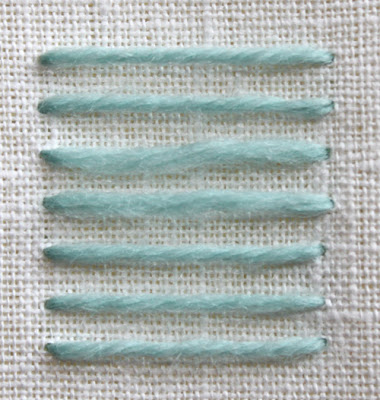
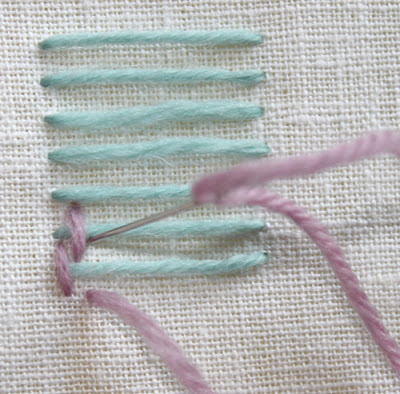

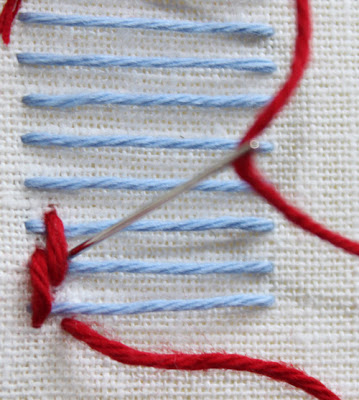
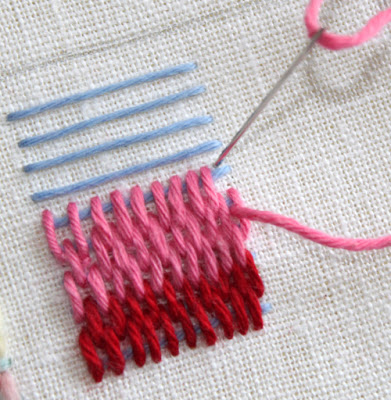
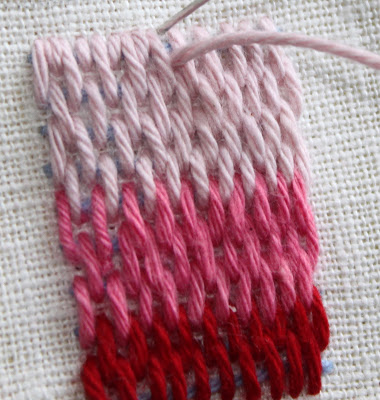
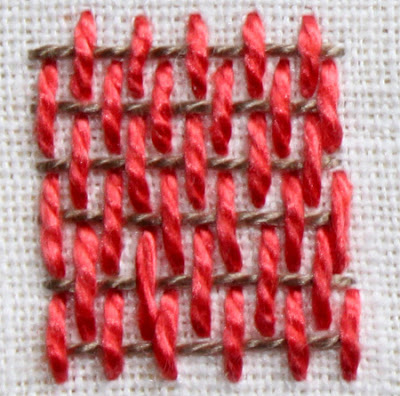
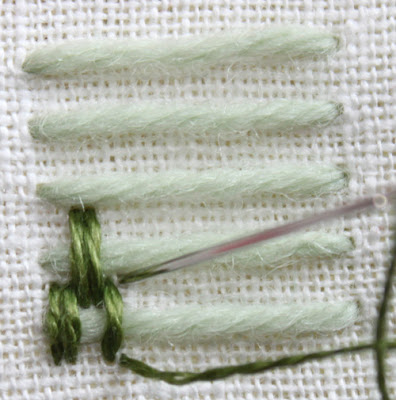
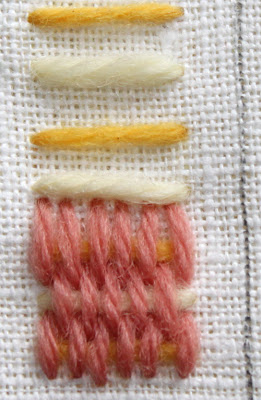
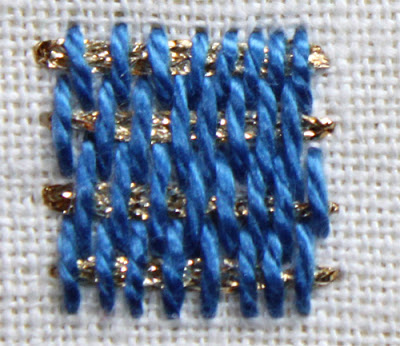


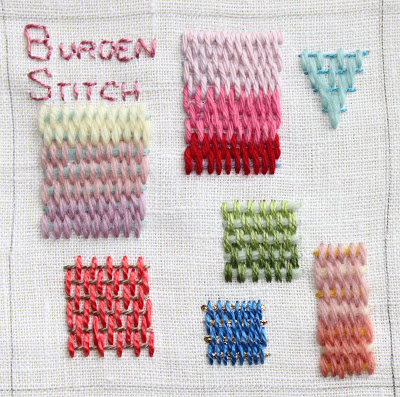
Thanks so much for sharing! You put a lot of time into this tutorial.
Desi